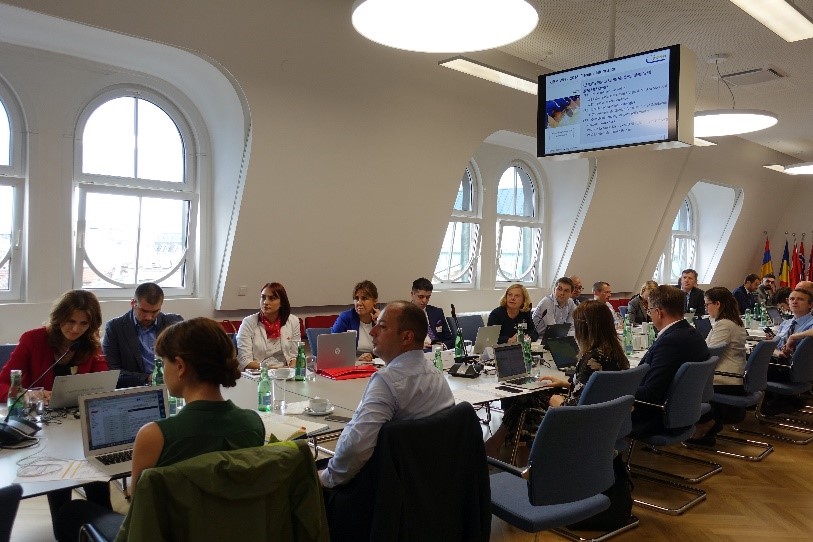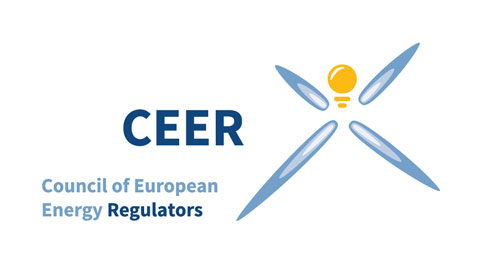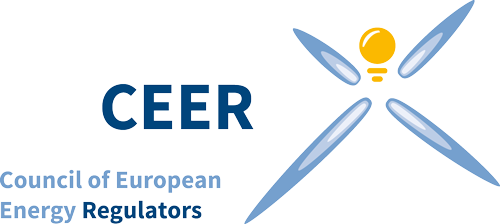| 
Editorial Helping consumers benefit from energy markets is a top priority of national energy regulators and CEER (their European association. CEER’s commitment to consumers is in evidence in our 2 most recent publications, events, and our international work with neighbouring regulatory associations.
CEER publications in July 2018: • The Benchmarking Report 6.1 on the Continuity of Electricity and Gas Supply monitors the continuity of supply to consumers and the level and frequency of electricity interruptions across EU countries (using metrics such as SAIDI, SAIFI and CAIDI indices) and the technical operational quality of gas. It shows the duration of interruptions (SAIDI) is falling.
• The CEER Conclusions Paper on Flexibility Use at Distribution Level advocates that the Distribution System Operator (DSO) should purchase flexibility from third parties (but not provide flexibility) so as to remain a neutral market facilitator. The paper (which is the result of extensive public consultation) sets out high-level guiding principles in terms of flexibility use at distribution level to deliver benefits to consumers (see the feature below). Events:
• CEER will co-host with the Florence School of Regulation an event on energy poverty. Registration is open but seats are filling up fast for this 14 September event in Brussels.
• Each year CEER has a dedicated Customer Conference for the benefit of consumer bodies across Europe. Save the date (29 November) for the 2018 CEER Customer Conference.
• Consumers were also the theme of our first ever tri-lateral workshop with MEDREG and ECRB (see international section below). Are regulators doing enough for consumers?
Tell us your view. The deadline for feedback to our public consultation on CEER’s proposed 3-year, 3D strategy and 2019 work programme (which has a strong consumer focus) is 10 August.
Until our next newsletter, in September, happy holidays. FEATURE – Regulators’ recommendations on flexibility use at distribution level In it Conclusions Paper on Flexibility Use at Distribution Level, CEER has developed high-level principles for national regulatory authorities (NRAs), with the ultimate goals of enabling flexibility use at distribution level and delivering benefits to consumers.
What is flexibility and why is it important?
Significant changes in the European energy system over the last decade have been driven by increasing deployment of intermittent renewable generation, decarbonisation, and digitalisation. One way of managing these changes and ensuring secure system operation is through improving system flexibility. Flexibility is the capacity of the electricity system to respond to changes that may affect the balance of supply and demand at all times. This definition refers to a wide range of potential sources and uses of flexibility in the electricity system, i.e. both in the market and in the network. Flexibility is not an end in itself, but a means to deliver a more affordable, secure and efficient whole power system. At distribution level, the need for the use of flexibility to benefit the grid will increase as a result of the ongoing energy and electricity system transition.
Key messages in the CEER Flexibility Paper
• The role of the Distribution System Operator (DSO) should be as a neutral market facilitator, performing regulated core activities and not activities that can efficiently be left to a competitive market.
• DSOs must act as neutral market facilitator, performing regulated core activities and not activities that can efficiently be left to a competitive market.
• In terms of flexibility, the DSO should purchase flexibility from third parties, but should not provide it. Why? Because a level playing field for flexibility is vital.
• Efficient use of flexibility resources may change in accordance with these national or regional differences. Hence, CEER recommends that the details of roles and responsibilities of DSOs are defined at the national level, because there is no one size-fits-all solution. However, CEER considers that its recommended guiding principles (in this paper) be respected, even though the details are left to national consideration.
What are CEER's guiding principles for flexibility?
Following broad support from stakeholders, CEER recommends to NRAs the following high-level principles:
• The regulatory framework for DSOs should be non-discriminatory and not hinder or unduly disincen-tivise DSOs from facilitating the development of flexibility.
• The regulatory framework should enable the development of a full range of possible flexibility ser-vices, while also ensuring that it is robust enough to deliver the best outcomes for consumers and the system as a whole (to the extent that this is within the scope of NRA’s responsibilities in each country). NRAs should ensure that no options are prematurely ruled out.
• All sources of flexibility that benefit the grid, including generators, storage, and demand side re-sponse, should be treated in a non-discriminatory manner when procured by network operators. Regulatory incentives should avoid any bias towards specific technologies that deliver flexibility.
• DSOs should be able, under the relevant regulatory frameworks, to access and use flexibility services provided by grid users for managing the distribution network, where the use of this flexibility is con-sidered to be the most economical solution and avoids undue distortion to markets and competition.
• Within the framework set by the relevant European legislation, the details on the roles and responsi-bilities of DSOs should be determined at national level, given the diversity of situations, legislation and needs across EU Member States and the varying nature of DSOs (e.g. size and location).
• It is vital to differentiate between the use of flexibility by market actors and the use of flexibility that benefits the grid by the DSO. This distinction is due to their different competitive, technical and regu-latory conditions. The source of flexibility may be the same, the purpose is different.
• Intensify the discussion on principles and roles and responsibilities regarding DSO-TSO coordination in the field of flexibility. This CEER conclusions paper is the result of an extensive public consultation process. It builds on feedback to a public consultation document and discussion at a workshop held in March 2018. Annex 2 of the paper has a detailed evaluation of the responses received to the consultation paper. International 
Consumer involvement and retail market opening was the theme of the first CEER-ECRB-MEDREG workshop (27 June). It discussed consumer protection, simple energy bills and price comparison tools (see the joint press release). Publications
- CEER Benchmarking Report 6.1 on the Continuity of Electricity and Gas Supply, 26 July 2018
- Flexibility Use at Distribution Level: A CEER Conclusions Paper, 17 July 2018 Public Consultations
- CEER draft 3D, 3-Year Strategy and 2019 Work Programme (deadline: 10/08/2018) 
Contact Una.Shortall@ceer.eu Tel: +322 788 7330 or
+ 32 484 668 599 

Unsubscribe from CEER News | 



